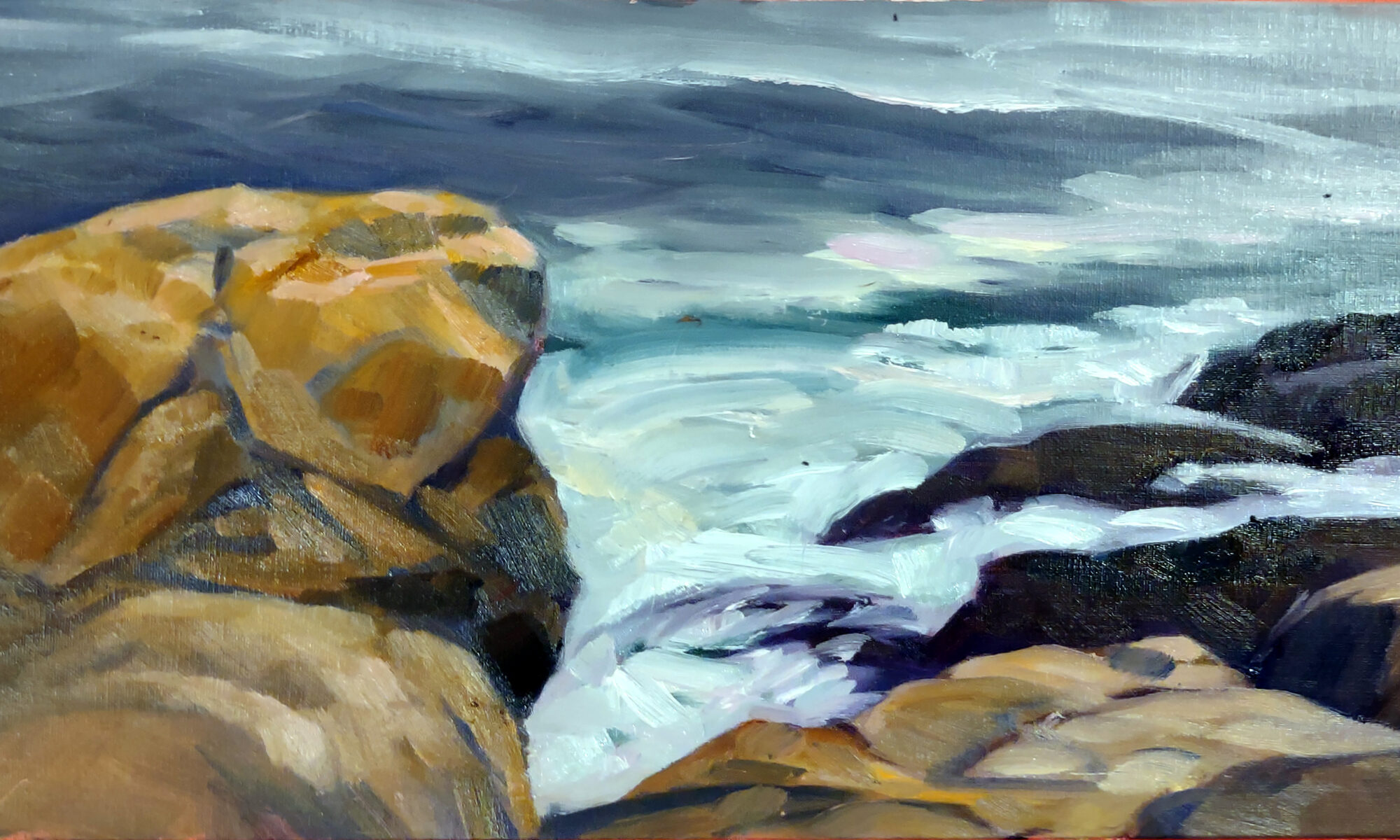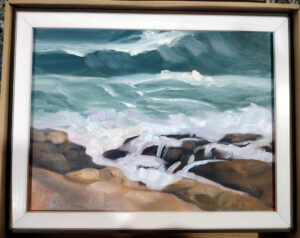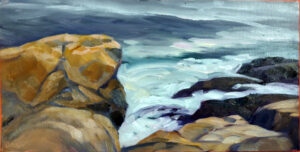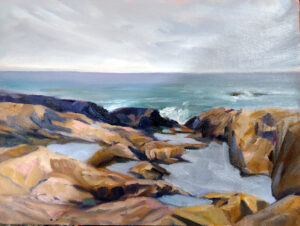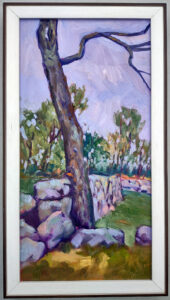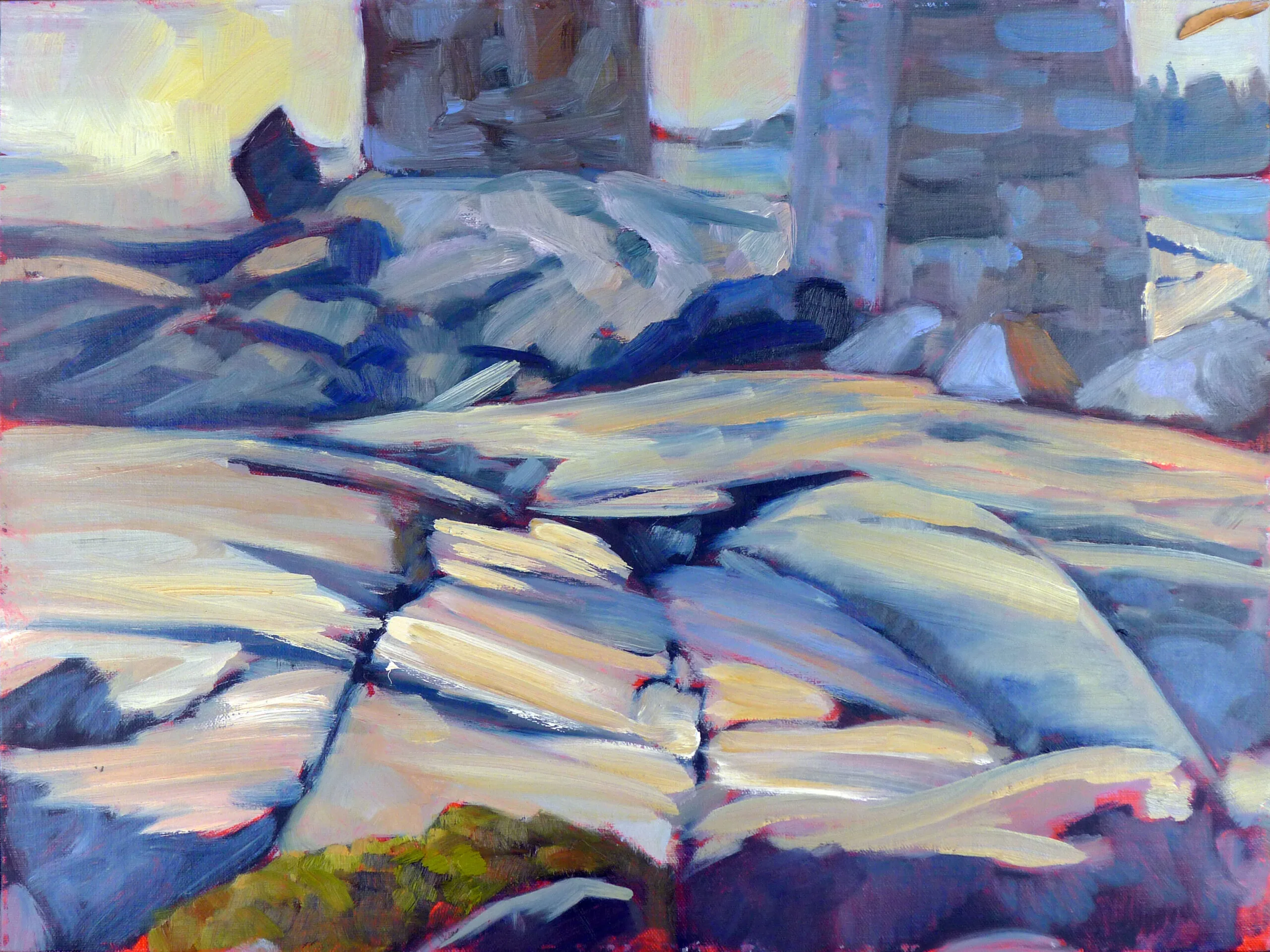
If you paint at the Marshall Point Light, someone is bound to ask, “Did you know this lighthouse was in the movie Forrest Gump?” It’s a lovely lighthouse and deserves its status as an American icon. I’ve painted it and its approaches many times. There is nothing wrong with painting lighthouses (despite what art snobs say). However, that doesn’t mean you have to be obvious about it. Spend enough time with any lighthouse and you start seeing other things that interest you—the ubiquitous brick oil house, or the porch, or the surf spraying onto the rocky headlands.
Marshall Point Light stands on a bedrock outcropping that can be completely awash depending on the weather and the tide. It’s connected to the land and the keeper’s house by a long wooden walkway. Visitors usually walk out to the white brick tower, stop at the steel door, and turn around and walk back. There’s really nothing to see out there—unless you lean over the railing and examine the bedrock.
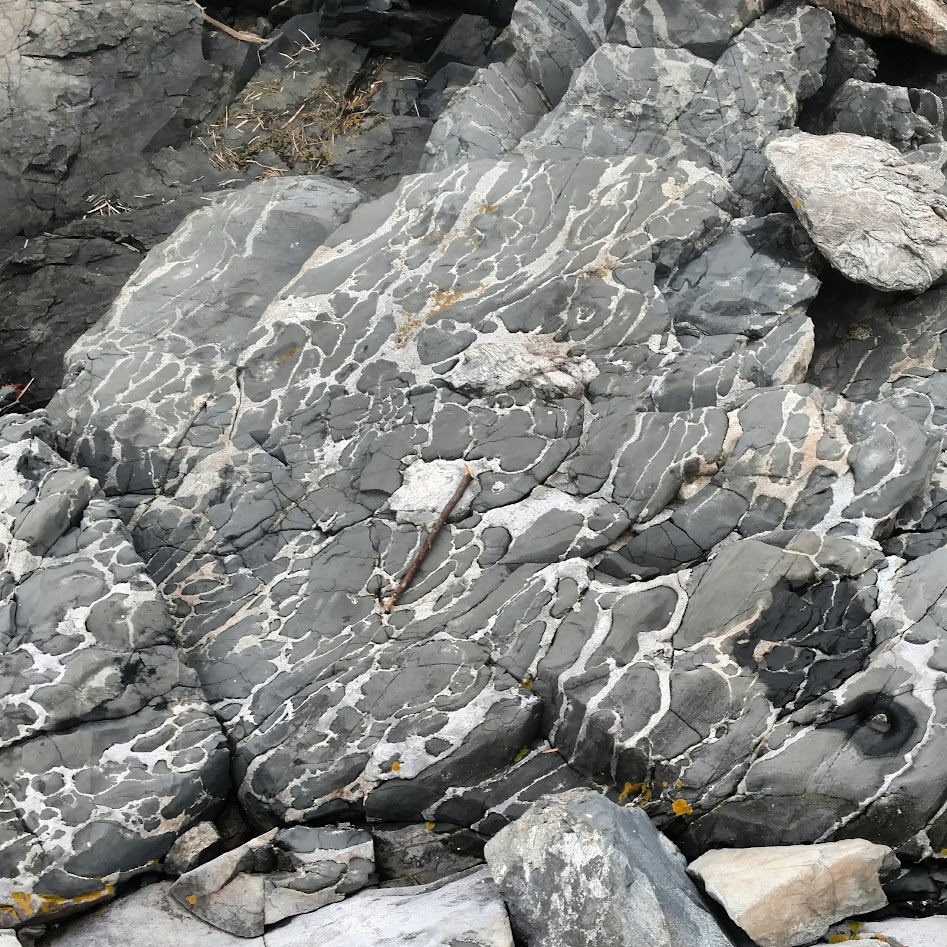
Most of what is exposed is metamorphic rock that has been highly deformed by geologic pressures. Interlayered quartzite and gray mica schist are wildly contorted. Dikes of younger black basalt crosscut this metamorphic rock. Even though I don’t want to paint those formations in detail, I’m still fascinated by them every time I’m in Port Clyde.
On this day, Poppy Balser was visiting. We didn’t have a lot of time before the tide turned, so we set out to do quick sketches. I’m happy that I focused on the rocks.
How to paint a lighthouse
If I were visiting Maine I’d want to paint a lighthouse. They’re iconic, beautiful, and historic. As with any new subject, I’d start with a view of the scene in its entirety. Some lighthouses, like Pemaquid Point, or the Portland Head Light, have keepers’ houses attached. These create a very pretty roofline rhythm. Others, like Owls Head or Marshall Point, have separated keepers’ houses. After I did one overall scenic painting, I’d start looking for details that interest me.
Reserve your spot now for a workshop in 2025:
- Advanced Plein Air Painting, Rockport, ME, July 7-11, 2025.
- Sea and Sky at Acadia National Park, August 3-8, 2025.
- Find Your Authentic Voice in Plein Air, Berkshires, MA, August 11-15, 2025.
- Immersive In-Person Fall Workshop, Rockport, ME, October 6-10, 2025.

